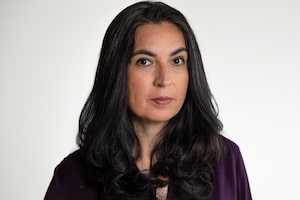When Nehiyaw artist Kent Monkman was a boy, he would go to the Manitoba Museum to walk around and look at Indigenous peoples’ frozen-in-time personal possessions and treasured objects.
But something was missing. There was a disconnect between the romanticized and stolen objects in the museum and the reality of what he saw outside: the awful conditions of the Indigenous people living on the streets of Winnipeg, the result of decades of colonial laws and dispossession.
Inside: the settler version of modern historical events in North America, on full display. Outside: the truth of the Indigenous experience on this land, in which we walk, live and love, despite efforts to wickedly erase us from the dominant colonial structures that were implemented when Europeans arrived in North America.
Indigenous peoples and settlers experience and see history differently because, until very recently, the so-called victor has been the only one telling the tale, setting out racist policies to violently remove Indigenous peoples from the land and then using public institutions – including residential schools, universities and museums – to reinforce and carry on the narrative. This is how we get erased.
Enter Mr. Monkman, a member of Fisher River Cree Nation, and his alter ego Miss Chief Eagle Testickle, who is at the centre of many of his paintings (and often wearing exceptionally fine shoes). In his latest collection, Being Legendary, Mr. Monkman worked with the Royal Ontario Museum to confront erasure head on: by telling the story of Indigenous science, creation and way of life at the heart of a Canadian cultural structure that in some ways symbolizes our very destruction.
His takeover of prime ROM space is extraordinary, as is the ROM’s admission in its press release about the exhibit that “conventional historical and museum narratives” require a reckoning. This has been a gaping oversight as tens of thousands of children march through the museum on school excursions to learn about truths. It is shameful that most public museums have been slow to adapt.
Being a spectator to Indigenous reality is different from being a participant in it. That difference should be acknowledged in a teaching museum.
Our shared Indigenous history was not a course Indigenous peoples could choose in our classrooms, along with an identity. Indigenous children don’t ask to be born into the burden of history, or into families suffering trauma from violent separation and from child welfare agencies that continue to take children away. This can’t be whitewashed; these realities must be seen and heard.
Canada is finally at the point where it is making space for Indigenous peoples to tell our own narrative about our own lives. We have our own glorious stories of creation: of falling from the stars and the sky to this Earth, stories and songs of the all-knowing and all-seeing water – nipiy – present in every single atom of every living creature. We see things differently: “all of creation and all beings, we are misiwê, all that is, including all that cannot be seen or understood,” as the exhibit tells us.
By mixing in pieces pulled from the ROM’s collections, such as dinosaur bones and eight beautifully beaded and sewn sets of moccasins – each one obviously made with love by unknown artists before they were heisted and placed in museum collections, where they waited to be rediscovered and heard – Mr. Monkman is revealing just how long Indigenous peoples have been on Turtle Island. He is using the tools of the colonizers to blow apart the traditional, one-sided, western conceptual view that has been shared ad nauseam.
The moccasins, for instance, sit in a devastating room that speaks to an interruption of our passed-down knowledge. Inside is a remembrance to the Battleford Eight: six Nehiyaw and two Assiniboine men who were hanged in 1885 in Battleford, Sask., during the North-West Rebellion, when the Canadian government was trying to starve the Indigenous peoples off the Prairies. The central, epic painting in this room depicts residential school children being forced to watch the hangings of the men, who – as Mr. Monkman said in a Q radio interview – would have been their relations.
What Mr. Monkman has created at the ROM is bigger than a mere exhibit. It shows a constant, lived reality.
Mr. Monkman is a true Nehiyaw voice who is telling our story. He is showing us how to begin to turn overtly colonial spaces around, and how to reclaim them with our songs, stories, art and truths. We can only hope Being Legendary will be carried across Canada and that every student – adult and child – gets to see it.
 Tanya Talaga
Tanya Talaga